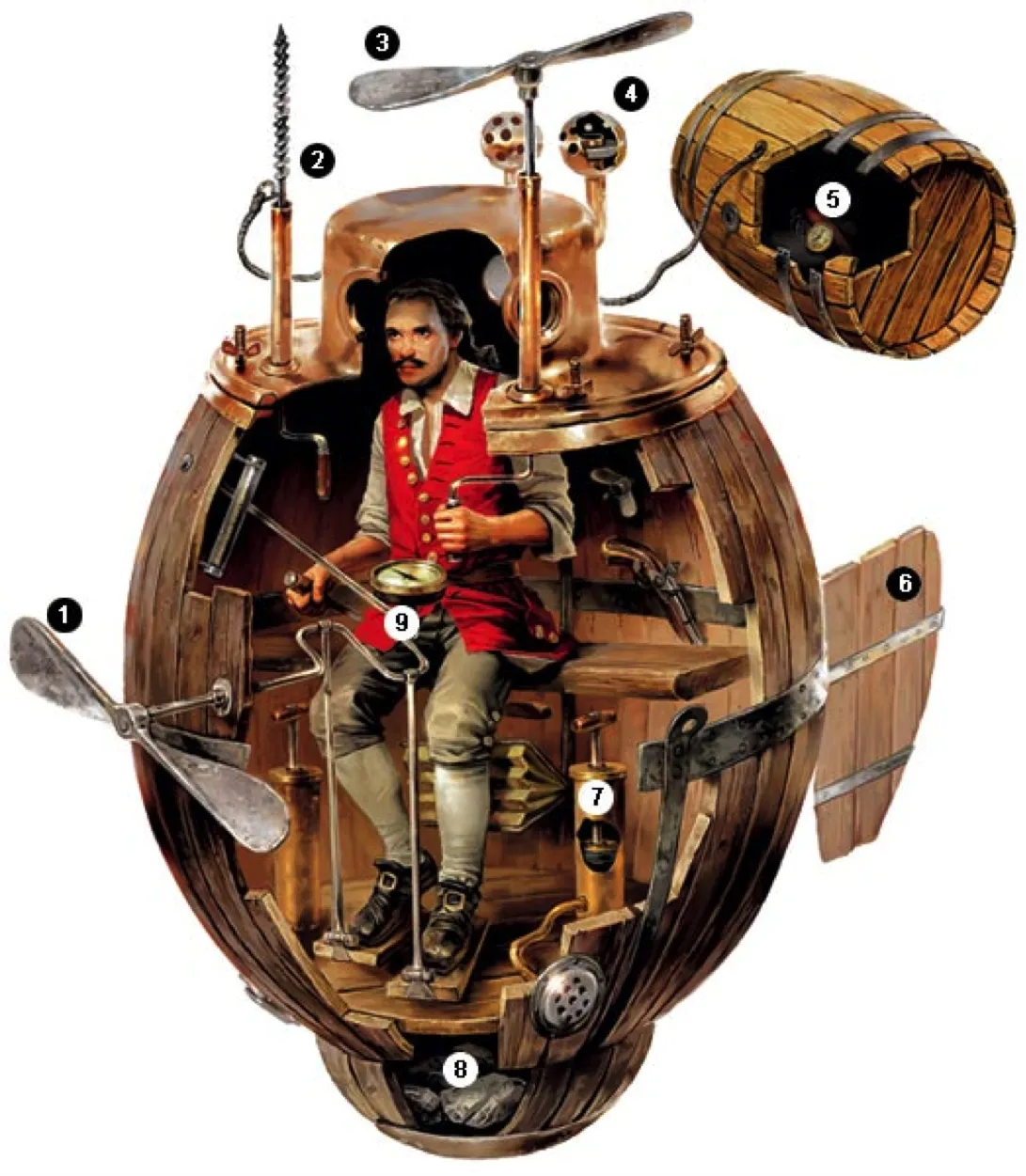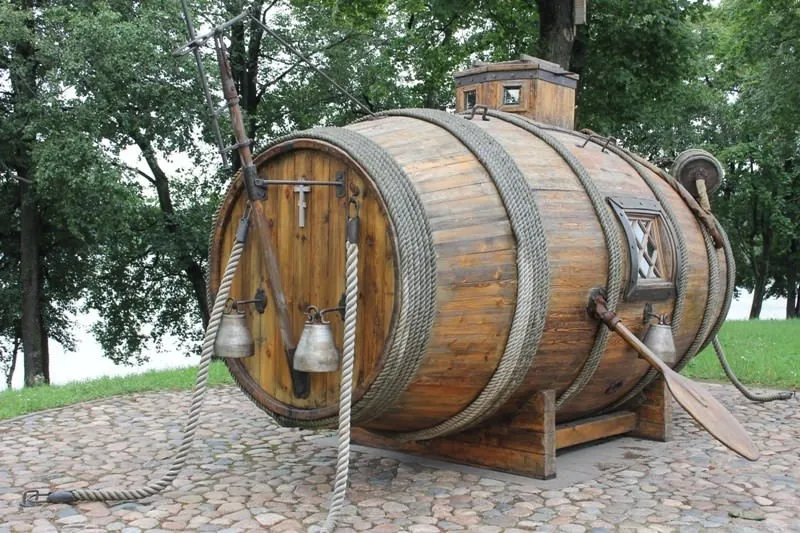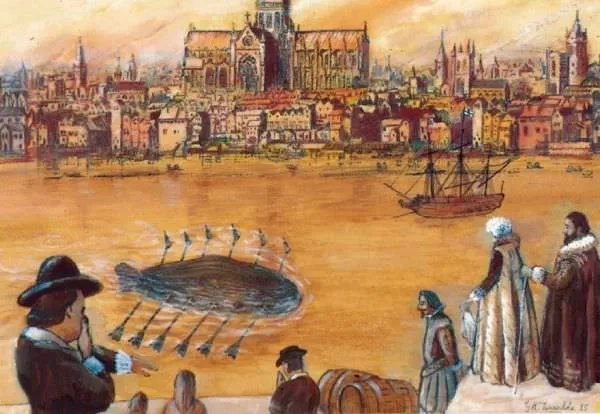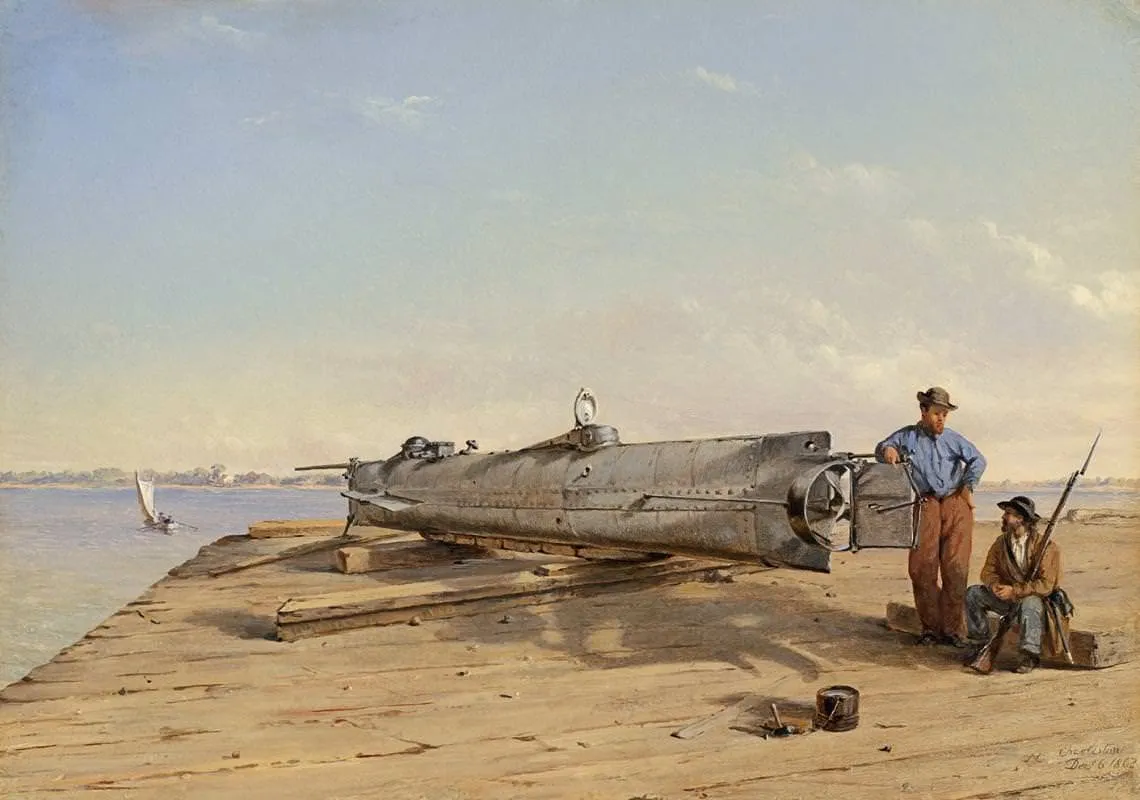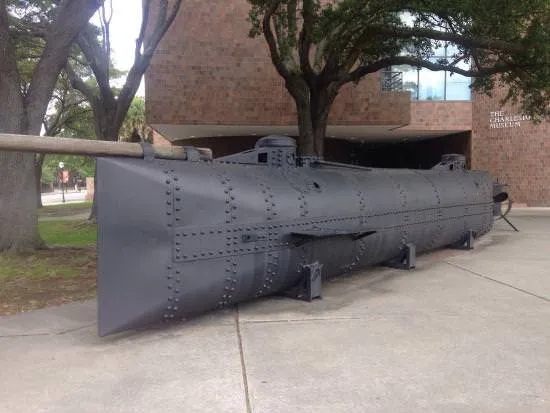I'd wager most people know what this is a picture of, off the top of their heads. The Turtle, built in 1775 is widely but mistakenly believed to be the world's first submersible. It's mostly famous because it destroyed itself in the attempt to sink a ship in 1776.
The first Russian submersible, Rolie Polie Olie, was built in 1721, predating the Turtle by 54 years. It also never sank any ships and there's less information available as to the means of construction and operation.
Cornelius Drebbel's trio of submarines date back to the 1620s, making them older than the first two on this list by far. Interestingly they were propelled by oars, which passed through the hull with leather skirts to prevent water from entering.
These were unusually successful for early submarines. What information we have indicates that they were reliable and safe, at least by comparison to the H.L. Hunley (seen below) and utilized a chemical means of generating fresh oxygen onboard (saltpetre) which most of the other subs on this list didn't even attempt.
The H.L. Hunley was the first submersible ever to successfully sink a ship, though it was destroyed in the process. It was used only three times, every one resulted in the sub sinking and killing everyone onboard. The men who volunteered to serve aboard them must have been brave or foolish.
The first sinking took place August 29th, 1863 during a test run, drowning all 8 onboard. The second sinking took place on October 15th, 1863, once again killing all 8 onboard, the inventor included. The third use was in combat, on February 17th 1864.
This third attempt was the only remotely successful one. The sub still sank and all hands onboard drowned, but they managed to sink the USS Houscatonic warship in the process. It was less a viable, reusable war submarine and more of a suicidal "manned torpedo" in the end.
This brings us to the work of John P. Holland, inventor of the first recognizably modern, viable submarines. His great innovation was to combine battery power and electric motors for use underwater with diesel engines for use on the surface. The Fenian Ram, seen above, was launched in 1881 as the first big application of his ideas.
The US Navy would later commission 6 submarines of his design. It was also widely copied by other nations like Japan and France, becoming the de facto initial form for uboats and heralding the dawn of the age of undersea warfare.
Stay Cozy!
